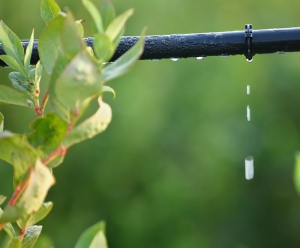Pest and Symptom Identification
Identification of the pest species or plant disease is vital for decisions regarding control measures, if any, including proper material selection and application rates. Before a pesticide is applied, a determination must be made if the damage observed is actually being caused by a pest and not an abiotic (non-living) factor such as over-watering, chemical damage or sunburn. If a pest is identified as having caused the observed damage, a qualified person will decide if the timing is appropriate for a pesticide application. In other words, is the pest that caused the damage already gone for some reason or has it entered a life stage where pesticides would not prevent any further damage. An Agricultural Commissioner/Weights and Measures (ACWM) Entomologist, Plant Pathologist and/or Certified Arborist are available to provide an identification of the actual cause of any observed damage and assist with a determination if a pesticide application will help.
ACWM operates entomology and plant pathology laboratories capable of providing rapid and accurate identification of insects and other invertebrates (snails, slugs, spiders and mites) as well as diagnosis of plant diseases. The two labs process over 8,000 pest specimens annually for Los Angeles County residents, schools, governmental agencies, growers, plant nurseries, and pest control operators.
Specimens can be taken directly to the labs (call first) or mailed in. When mailing a specimen, careful handling is required. Appendix I has information on how to properly submit a specimen invertebrate or plant disease sample by mail. Appendix H contains resources and contact information for County departments seeking assistance with identification of potential weed or vertebrate pests (mammals and birds).
Regular Pest Surveys
Regular surveys allow you to detect damage in the early stages and then do something about it before a pesticide application may become necessary. If detected early enough, damage can be pruned out, or changes made to the habitat, to cultural practices, etc. Once pest populations get high, management options can become limited. Regular surveys result in a familiarity with the local landscape environment allowing more precise determinations of pest control methods/ timing, or if any is needed at all.
Action Thresholds and Guidelines
Applications of pesticides should never be made based solely on a calendar schedule, but only after monitoring indicates a pest presence and a threshold of damage has been met, or is likely to be met. Action or damage thresholds help guard against applying pesticides unnecessarily because any damage being caused by an actual pest that could be controlled by a pesticide may simply be tolerated if it does not exceed the established threshold. Don’t forget that sometimes damage can even be managed at a tolerable level by selective pruning as previously described. The sidebar on this page outlines a pre-application decision making process that summarizes much of what has been discussed in this section.
The use of this process is required for any outdoor application of a pesticide at a facility owned or managed by Los Angeles County
A persistent or reoccurring problem requiring multiple pesticide applications suggests a weak point in a facility’s IPM plan. These situations should be examined by an ACWM biologist or other qualified person who may recommend changes in landscaping (pest tolerant species), better exclusion or other changes in management strategy.
Sound Management Methods
Management methods for pests should integrate the range of available and effective options including cultural, physical, mechanical, chemical, and biological. The following is a brief description of each:
Cultural Control
Cultural control is modifying or changing the environment, or the way something is done (the practices) in an attempt to make an area less attractive to pests, or less likely the pests will find what they need to thrive. Cultural control includes changing from overhead watering to drip irrigation, appropriate plant pruning and fertilizing, and removing bird feeders to make an area less attractive to rats.
Physical/Mechanical Control
These are usually control measures that directly kill or remove pests. They include things like using steam or hand-pulling to kill weeds, trapping for rodents and pruning out infested plant foliage.
Chemical Control
Chemical control means using a pesticide to control, prevent or repel pests. Pesticides include: insecticides, fungicides, herbicides, rodenticides and other chemicals like many household cleaners/sanitizers.
Biological Control
Biological control is when natural enemies of pests maintain the pests’ population levels below a damage threshold. In some agricultural areas, biological control agents are actually purchased and released onto a crop. In urban Los Angeles County, biological control will most often mean protecting, conserving and augmenting natural enemies that are already occurring in the area.
The following sections contain pest management information for some of Los Angeles County’s common vertebrate, invertebrate, weed and disease pests. In addition to management methods, the sections also contain information on the other components of a successful IPM Program, which, in case you forgot, are Prevention, Pest Identification, Surveys and Thresholds/Guidelines. It is not possible to cover every pest, or pest scenario, in this document. However, managers of County facilities needing additional help are encouraged to utilize the resources in the Appendix Section or to contact an ACWM biologist for support.
Pre-Pesticide Application Decision-making Process
Is a pest really causing a problem?
⇩
Are the number of pests and the amount of damage they are causing intolerable?
⇩
Would a pesticide be effective?
⇩
Are the conditions that caused the pest activity likely to stay the same leading to a bigger problem?
⇩
Are there any nonchemical methods that can be used to manage the pest or change the environment to prevent pest problems in the future?



